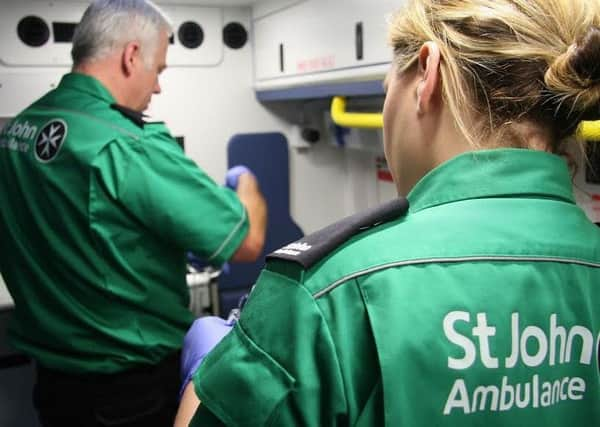COLUMN: How to treat burns


This week: severe burns.
Burns and scalds are caused by damage to the skin when it comes in contact with heat. Your priority is to cool the burn as quickly as possible. If someone has a severe burn they may develop shock which is a life-threatening condition. They will need to get to emergency help as soon as possible.
What to look for
1. Pain
2. Areas of superficial, partial thickness and/or full thickness burns
Advertisement
Hide AdAdvertisement
Hide Ad• Superficial burns affect the outer layer of the skin and may look red and tender
• Partial thickness burns also affect the outer layer of the skin but the skin becomes red and raw, and blisters may form
• A full thickness burn affects all layers of the skin and can cause damage to nerves, tissues, muscles and blood vessels
3. Difficulty breathing
4. Signs of shock.
What to do
1. Start cooling the burn as quickly as possible with cool running water. Help the casualty to sit or lie down, preventing the burnt area from touching the ground to keep it clean
2. Call 999 or 112 for emergency help
Advertisement
Hide AdAdvertisement
Hide Ad• If possible, ask someone else to call so that you can continue to cool the burn
3. Continue cooling the area for at least ten minutes or until the pain feels better.
• Do not over cool the casualty in case you lower their body temperature to a dangerous level, causing hypothermia. This can be more serious in the elderly and babies
4. Do not touch the burn. Carefully remove any jewellery, watches, belts, shoes or burnt clothing before the area begins to swell.
Advertisement
Hide AdAdvertisement
Hide Ad• Do not remove any clothing that is stuck to the burn. If there is someone else available to assist you, they can do this while you continue to cool the burn
5. When the burn has cooled cover the area loosely with cling film, lengthways. Discard the first two turns of the cling film, and then apply a new piece lengthways over the burn
• If the burn is to a hand or foot you could use a clean plastic bag . If there is no cling film you could use a sterile dressing or non-fluffy material such as a triangular bandage
• Secure with a bandage or adhesive tape but not to the damaged skin
Advertisement
Hide AdAdvertisement
Hide Ad6. While waiting for help reassure them and treat them for shock if necessary. Monitor level of response.
For those looking for quick, easily accessible first aid information, the St John Ambulance app is available free on smartphones and the website (www.sja.org.uk) offers demo videos, and lots of free advice. For more information about first aid courses please call 08700 10 49 50.